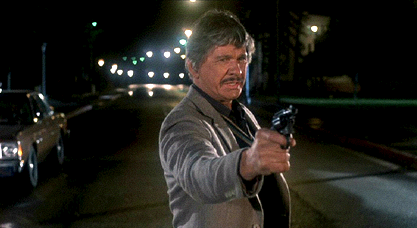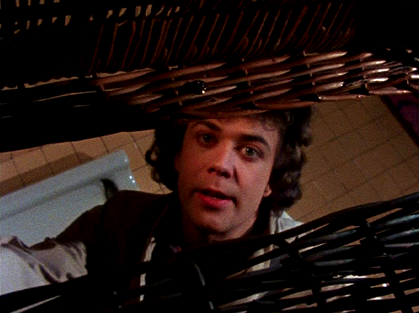Directors: Edmund Purdom, Alan Birkinshaw (as Al McGoohan), Ray Selfe (uncredited), Derek Ford (uncredited)
Writers: Derek Ford, Alan Birkinshaw (as Al McGoohan)
Producers: Dick Randall, Steve Minasian
Cast: Edmund Purdom, Belinda Mayne, Alan Lake, Mark Jones, Gerry Sundquist, Kelly Baker, Pat Astley, Kevin Lloyd, Wendy Danvers, Wilfred Corlett. Lawrence Harrington, Maria Eldrige, John Aston, Caroline Munro (as herself), Ricky Kennedy, Sid Wragg, Max Roman, George Pierce, Derek Ford, Adrian Black, Ashley Dransfield, Ray Marioni, Ken Halliwell, Paula Meadows, Derek Hunt, Des Dolan, Sarah Hope-Walker, Dick Randall, Keith Smith
During the Christmas season in London, England, a maniac is killing anyone dressed as Santa Claus. Scotland Yard Inspector Ian Harris (Edmund Purdom) has been assigned to the case that seems to yield no clues and his lack of results places his job in jeopardy.
The Flashback Fanatic movie review
It has to be stated up front that this is not a good movie. Randall and Minasian’s much-maligned and outrageous Pieces is a masterpiece in comparison. Despite the fact that these producers had already dabbled in the genre, it seems as though they were not very focused on figuring out how to rip off slasher films by learning what worked about them. That laziness or ignorance could have yielded some satisfying variations. Unfortunately, Don't Open till Christmas only contains the handful of ornaments that the moneymen and trend-followers thought should trim any horror film. Perhaps the idea was that anything with blood, boobs, and a lot of kills would be distinguished by its Christmas theme. However, other fright flicks had already raised hell on the holidays with more style, more interesting characters, and more satisfying plots.
A large share of the blame must belong to the succession of directors that this film went through before it was completed. Star Edmund Purdom began the direction on the film. Then at least three other people also directed scenes to finish the production. As a result, we are left with something that seems to be assembled from unrelated pieces. Even within certain sequences of a victim being stalked, it seems as if some of the footage that would help establish a scene or movement through a setting is missing or was never shot. Was this due to filmmaker incompetence, some footage being unusable, production delays resulting in not having the time or money to get the needed footage, or the chaos of a stop-and-start production going through so many directors that there was a lack of planning to get all of the needed shots?
Another problem for this film is that none of its characters are the least bit interesting. The character we should have the most empathy with is Kate Briosky (Belinda Mayne), the daughter of an early Santa-suited victim in the story. Although she does prove to be the film’s most proactive character as she tries to discover some background about a person she has suspicions about, her scenes, like most others in the film, are not given much conflict or intrigue. She never gets a chance to distinguish herself as a character of any interest. No one else seems to have a life of any interest either. They are just supposed to move in front of the camera, say lines, and kill time between the mostly unrelated stalking-of-Santas scenes.
In another example of the catch-as-catch-can scenes that make up this film, there is a musical cameo by former Hammer horror films beauty and Bond girl Caroline Munro. She plays herself performing a song with a band on stage during another stalking Santa sequence. Then she is never to be seen again.
Don’t Open till Christmas does have a pretty substantial body count, but nearly every victim is a completely anonymous person. We don’t ever get to know them before they are wasted. Despite the variety of kill techniques, the murders usually seem rather perfunctory, because most of the victims are just a series of red-suited targets ready to be picked off.
The one interesting kill scene works because there is a bit of word play between the performer (Kelly Baker) in a peep show booth and her shy Santa-suited customer (Wilfred Corlett). We become interested in the situation and are anticipating what kind of show this sexy girl might perform when we get the jolt of the killer striking again.
Don’t Open till Christmas has one interesting distinction that contradicts one of the criticisms often directed at slasher films: The girls that get naked are going to get it. In this film one lovely lady is actually spared by the killer because he ogles and appreciates her naked beauty. Conversely, a later victim is denuded and left on display only after she is killed.
Speaking of naked beauty, at the top of my wish list is Pat Astley as Sharon, the nude model that works up most of my interest in this flick. I am forever grateful she did not wait until Christmas to unwrap her prize package. Ultimately, the rest of Don’t Open till Christmas goes over like a lump of coal.

































































